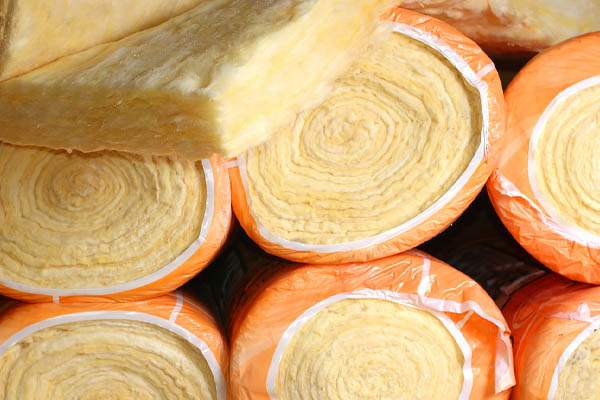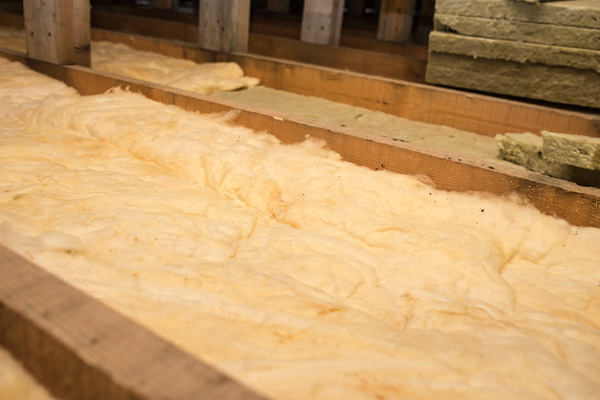How Is R Value Calculated?

Insulation can reduce energy consumption without sacrificing comfort. Its primary job is to block heat flow, but it can also minimize noise, repel moisture, and enhance air quality. The specific abilities depend on the type of insulating material. As you study your options, you may come across technical terms that are hard to comprehend. A deep understanding will make it easier to evaluate the candidates. You will be able to make the right choice based on the requirements of your home. This article will help you appreciate each insulation material and answer the question, “How is r value calculated?”.
Insulation Materials & Their R-Values
Contents [hide]
Home improvement stores carry different types of insulation. Their labels will reveal their technical specifications, including their R-value per inch. Higher numbers indicate a superior ability to block heat flow. Naturally, you will want to gravitate toward the materials with the highest figures. There is one problem: cost. You must pay a premium to obtain the best materials. If you need to cover large surfaces, you might end up paying a fortune. Check your home’s insulation requirements with the help of professionals. Perhaps it does not demand such elevated R-values. You may do fine with much less.
Related Article: Do-It-Yourself Insulation Problems: 6 Things That Lead To DIY Nightmares
Fiberglass Insulation

One of the most common types of insulation is fiberglass. You can find it in batts with R-values per inch ranging from 2.9 to 3.8. They are widely available and easy to install. Most of all, these are among the cheapest options on the market. It is a good choice if your goal is to add insulation to your home without burning a hole in your pocket. You can overcome these relatively low values by stacking multiple layers of fiberglass. It is comparable to wearing several layers of clothing to ward off the cold. The thick barrier keeps you warm.
Blown Cellulose Insulation
Blown cellulose offers similar R-values, usually ranging from 3.1 to 3.8. This insulation often comes from recycled paper, cardboard, and wood. It is a safe and eco-friendly solution. If you need better insulation for extreme weather, go for spray foam. Expect R-values between 3.6 to 8.2, such that even a thin layer can deliver impressive performance. Foam insulation is more expensive than fiberglass and cellulose, but the cost is justified if you are in a region that experiences harsh winters. Installing it can drastically lower your energy consumption. You can save significant amounts of money on your monthly bills.
Related Article: 4 Winter Benefits Of Spray Foam Insulation In Fort Collins
What is Thermal Conductivity?

Now you know the most widely used insulation and their R-values, but you may wonder where the numbers come from. These are the results of multiple tests and calculations. Let’s delve into the concept of thermal conductivity to unravel the mystery.
Thermal conductivity is the measure of heat flow through a specific material, expressed in Watts per meter-Kelvin (W/mK). Thickness is irrelevant. A low value means slow movement, which is what we want for insulators. Meanwhile, a high value indicates fast heat flow, which is suitable for conductors. The Greek symbol for lambda (λ) represents thermal conductivity in mathematical formulas.
Vacuum-insulated panels (VIPs) usually provide around 0.008 W/mK of thermal conductivity. It is extremely low when compared to other materials. If you want the best insulation available, get this for your project. However, the high price is likely to make it inaccessible to most people. Sheep’s wool and fiber are also good insulators with a lambda of 0.034 W/mK. That is more than four times the value for VIPs. However, wool and fiber are also much cheaper than insulated panels. They are arguably the more practical choices.
Computing the R-Value
At this point, we can tie all the concepts to finish our calculations. We already defined the R-value as the resistance to heat flow. The difference between this and thermal conductivity is that the former considers the thickness of the material. It is why you will see the numbers described as R-value per unit length.
You can obtain the R-value of a material by dividing the thickness by the thermal conductivity. Be sure to match the distance units for the numerator and the denominator. If the top is in meters, the bottom should be the same. For example, let’s say you have a brick wall with a thickness of 220 mm and a thermal conductivity of 1.2 W/mK. Start by converting the thickness to 0.22 m, then divide this by 1.2. You get a low R-value of 0.18, which means the heat will easily pass through the wall. You can quickly feel it on the other side.
On the other hand, foil insulation with a thickness of 80 mm and a thermal conductivity of 0.022 will have an R-value of 3.64. If you plan to cover the brick wall with this material, you will end up with a higher resistance to heat flow at 3.82. That is a significant improvement. You can extend this concept to multiple layers of insulation. Just get the sum of their R-values to see the net effect. If the results are inadequate for your requirements, increase the thickness of the insulation or switch to a more heat-resistant material to pull the numbers higher.
Conclusion
R-value is an essential insulation specification. It provides consumers with a quantitative measure of performance. If you have several options, you can use the numbers to assess the effectiveness of each product. It saves you from expensive cycles of trial and error. The figures are not random. As shown in the formula above, you can get the R-value by dividing the thickness of the material by the thermal conductivity. Higher numbers indicate better resistance to heat flow. In your home improvement project, find a balance between thermal resistance and material cost. Hire insulation professionals for smart selection and proper installation.
Related Article: Does Spray Foam Insulation Absorb Water?
How Is R Value Calculated Fort Collins CO
To receive the many benefits that proper insulation has to offer, work with a professional insulation company for the best results. They can consider all of the necessary factors that will improve efficiency, comfort, and more. Ascend Construction specializes in insulation removal and installation, energy conservation, energy audits, whole house fan installations, and more in Fort Collins, Colorado, and the neighboring areas.

Contact Ascend Construction for a free consultation today. We can provide you with practical solutions to address the problem areas in your Fort Collins home. All of our services are affordable, and our work is guaranteed. Click here to contact us, or click the button below to give Ascend Construction a call. We offer free, no-obligation, in-home consultations.
Ascend Construction
301 S Howes St #1241
Fort Collins, CO, 80521